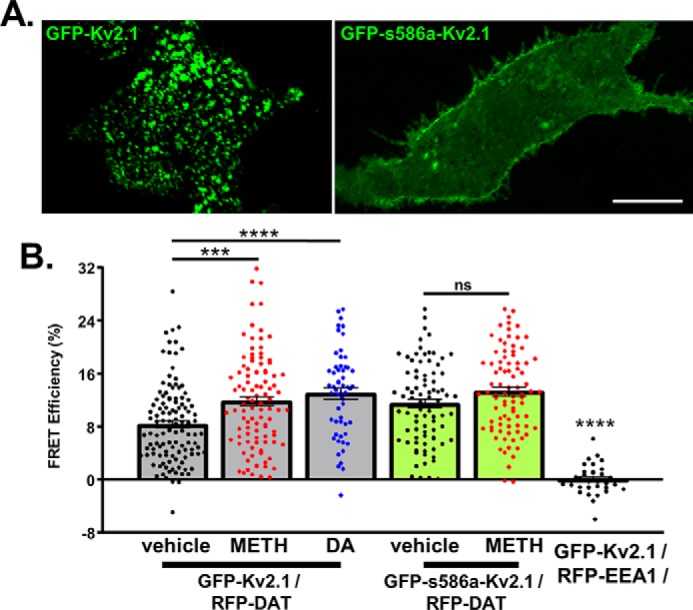Figure 3.

Disruption of Kv2.1 clustering prevents METH-induced increases in its proximity to DAT. A, representative confocal images at a single optical plane where FRET was conducted showing WT–GFP–Kv2.1 localization compared with the nonclustering mutant GFP–s586a–Kv2.1. (Scale, 25 μm.) B, measured FRET efficiencies. Comparing basal conditions (vehicle) and DAT activation (METH (10 μm) or DA (1 μm)) revealed an increase in FRET efficiency between RFP–DAT and Kv2.1 (GFP-Kv2.1/RFP-DAT, vehicle versus METH, p = 0.0066, n = 116 and 101 cells from 10 and 9 independent experiments for vehicle and METH, respectively; vehicle versus DA p < 0.0001, n = 61 cells from six independent experiments, Tukey's test following one-way ANOVA). No significant FRET increase was observed under the same conditions when Kv2.1 clustering was disrupted (GFP-s586a-Kv2.1/RFP-DAT, n = 83 and 86 cells for vehicle and METH, respectively, each from six independent experiments, Tukey's test following one-way ANOVA). To confirm the specificity of the FRET observed, GFP–Kv2.1 was expressed with a noninteracting protein tagged with an identical chromophore (RFP–EEA1), in which conditions no FRET was observed (p < 0.0001 between all experimental groups, n = 32 cells from four independent experiments).
